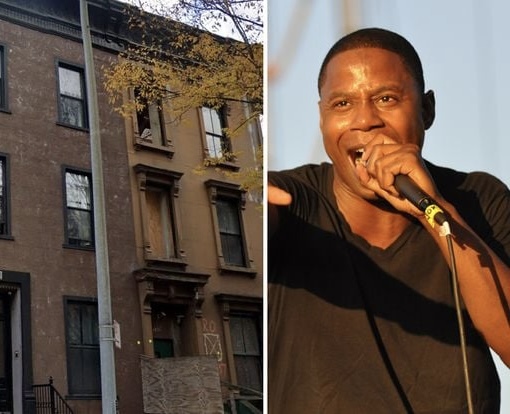Doug E. Fresh, a pivotal figure in the world of hip-hop, has found himself facing a significant financial setback with the foreclosure of his Harlem brownstone. This property, situated at 251 W. 131st Street, reflects both the cultural and personal significance tied to Doug E. Fresh’s legacy, yet its impending auction reveals deeper issues about financial strain and foreclosure in high-profile figures’ lives. The auction, scheduled to take place in Manhattan Supreme Court, sheds light on broader conversations around the economic realities facing entertainers after their careers peak. In this analysis, I’ll explore the cultural symbolism of Doug E. Fresh’s Harlem brownstone, the economic realities that high-profile entertainers often confront, and the implications of this foreclosure for the community and real estate market.
The Cultural and Personal Significance of Harlem
For decades, Harlem has stood as a cultural hub for African American art, music, and intellectual life. From the Harlem Renaissance to the golden age of hip-hop, this neighborhood has been synonymous with creative expression and cultural transformation. Doug E. Fresh’s association with Harlem goes beyond mere residence; it speaks to his roots in the birthplace of his musical career. Harlem is not just a backdrop for his life but a defining element of his identity as a pioneer of hip-hop. Owning a brownstone in Harlem represents more than just a piece of real estate—it is symbolic of status, success, and a connection to a rich cultural heritage.
The Harlem brownstone is also a piece of Doug E. Fresh’s legacy. Known as the “Original Human Beatbox,” Doug E. Fresh helped shape the sound of hip-hop in the 1980s and early 1990s. His hits like “La Di Da Di” and “The Show” are seminal tracks in hip-hop history. His brownstone, then, is not just another property on the market; it is part of the personal narrative of an artist who contributed significantly to the genre. Losing the brownstone is a loss not only for Doug E. Fresh but for fans who associate the property with the history of Harlem’s musical landscape.
The Economic Realities of Entertainers
Doug E. Fresh’s foreclosure reveals a more widespread issue among high-profile entertainers who face financial difficulties after reaching their career zenith. It is a common narrative in the entertainment industry—despite their immense success and cultural impact, many artists struggle with financial management and sustainability. Foreclosure, as in the case of Doug E. Fresh, serves as a stark reminder that success in entertainment doesn’t always translate to financial security. Celebrities often encounter challenges such as maintaining expensive lifestyles, poor financial planning, or underestimating the volatility of income in entertainment.
In Doug E. Fresh’s case, the foreclosure of his Harlem brownstone, triggered by a $1.6 million debt owed to Deutsche Bank, points to the difficulties that can arise from managing real estate assets. Real estate investments are often considered secure long-term assets, but they come with their own set of risks, particularly for individuals in industries where income can be irregular or unpredictable. Property taxes, maintenance, and mortgage payments can become significant burdens, especially when career opportunities diminish or shift.
This situation also brings to light the relationship between legacy entertainers and financial stability. Despite his pioneering role in hip-hop, Doug E. Fresh, like many before him, has faced economic challenges that undercut the public’s perception of celebrity wealth. His foreclosure brings attention to the need for better financial education and planning within the entertainment industry, especially for artists whose income may decline as their fame wanes.
The Auction: Community and Market Implications
The auction of Doug E. Fresh’s Harlem brownstone also raises important questions about the changing face of Harlem and the impression of gentrification. Harlem’s real estate market has shifted dramatically in recent years, with skyrocketing property values leading to an influx of wealthier residents and pushing out many longtime locals. The brownstone, which was once emblematic of Doug E. Fresh’s success and connection to Harlem, is now part of a broader narrative about the community’s transformation.
While the auction may attract buyers interested in owning a piece of Harlem history, it could also signal the continued displacement of the neighborhood’s cultural icons and residents. Harlem, like many historically African American neighborhoods, has undergone significant gentrification, leading to an erosion of its cultural identity. The sale of Doug E. Fresh’s brownstone might appeal to real estate developers or individuals looking to capitalize on Harlem’s real estate boom, but it also represents the fading presence of artists who have shaped the area’s cultural landscape.
Moreover, the auction speaks to the broader real estate market dynamics in New York City. Harlem, once a more affordable alternative to other Manhattan neighborhoods, has seen a sharp increase in property values, particularly for historic brownstones. While this has benefited some property owners, it has also contributed to rising costs of living and an increasingly exclusive real estate market. Doug E. Fresh’s foreclosure serves as a reminder of how even well-known figures can be affected by these market forces.
The Legacy and Lessons of Doug E. Fresh’s Foreclosure
Doug E. Fresh’s Harlem brownstone auction is more than a simple foreclosure case—it encapsulates a confluence of personal, cultural, and economic factors that make it a significant moment in both his life and the broader community. Harlem’s shifting real estate landscape, coupled with the financial realities facing many entertainers, provides the context for this auction. It is a sobering reminder that fame and fortune can be fleeting, and even those who have contributed immeasurably to culture can face financial hardship.
For Harlem, the sale of Doug E. Fresh’s brownstone is another chapter in the story of gentrification and displacement. The neighborhood that once served as a haven for artistic expression and community is now becoming increasingly inaccessible to the very people who made it what it is. The brownstone’s auction represents the intersection of Harlem’s past and its rapidly changing present, as the community grapples with the forces of real estate development and cultural erasure.
For the hip-hop community, Doug E. Fresh’s foreclosure underscores the need for financial literacy and sustainability within the industry. As hip-hop continues to grow into a global cultural force, artists must navigate the complexities of fame, finance, and legacy. The foreclosure of a hip-hop pioneer’s home serves as a cautionary tale, highlighting the importance of planning for the future in an industry known for its unpredictability.
In the end, Doug E. Fresh’s brownstone auction is more than just a real estate transaction—it is a reflection of the economic, cultural, and personal dynamics at play in the life of an artist and the community he calls home. It raises important questions about the role of financial education, the impact of gentrification, and the legacy of hip-hop’s pioneers in a rapidly changing world.
No comments yet.








